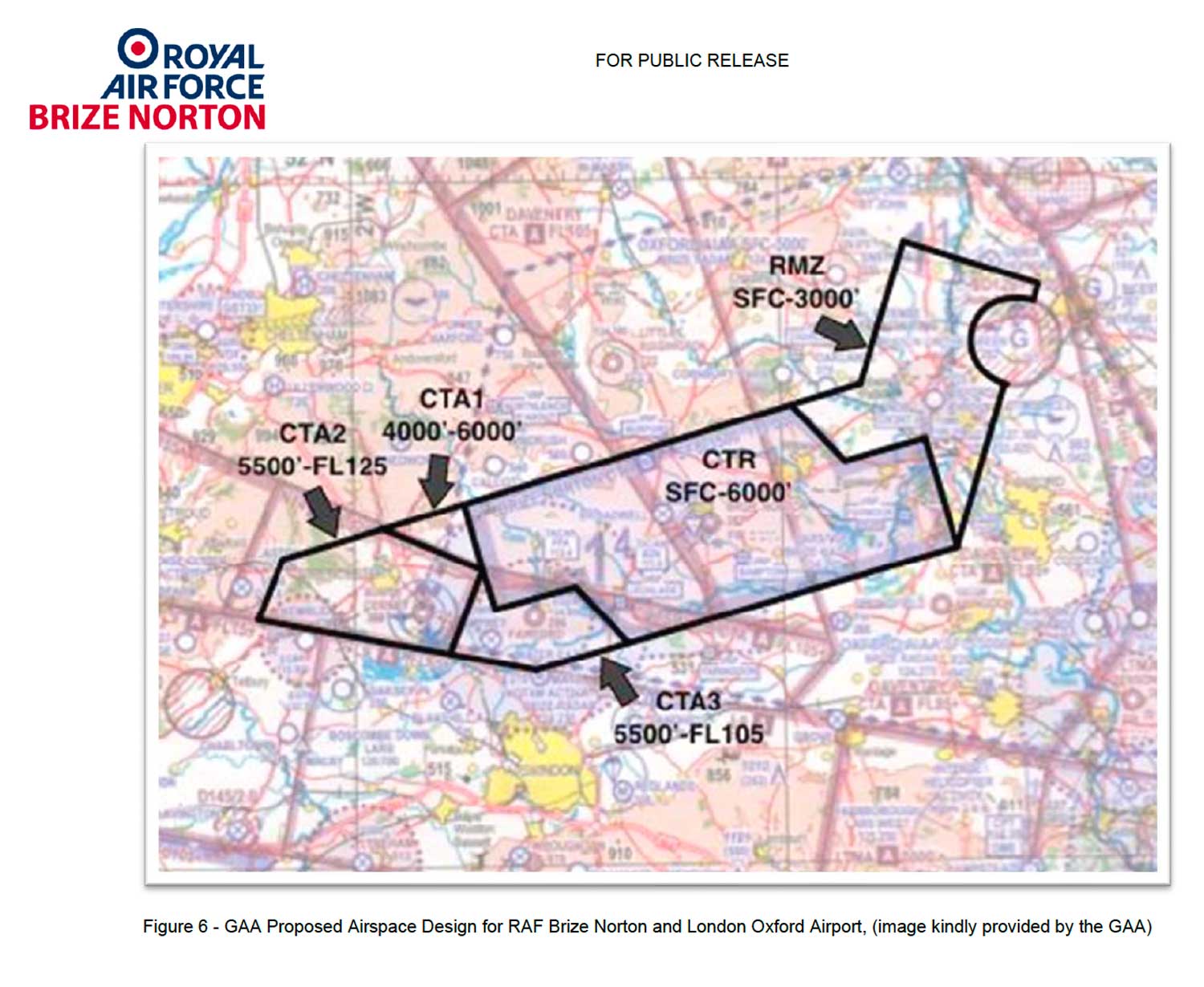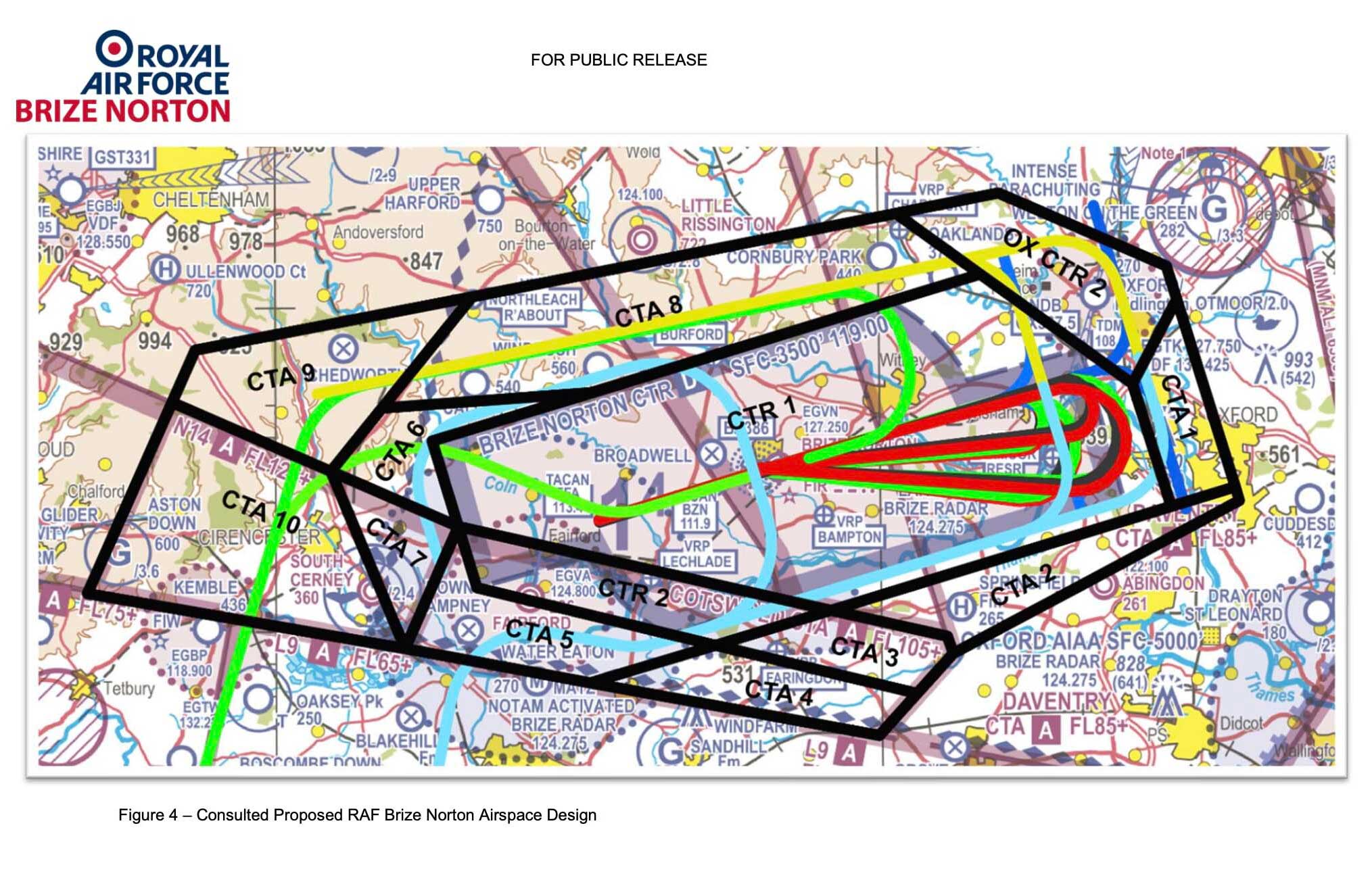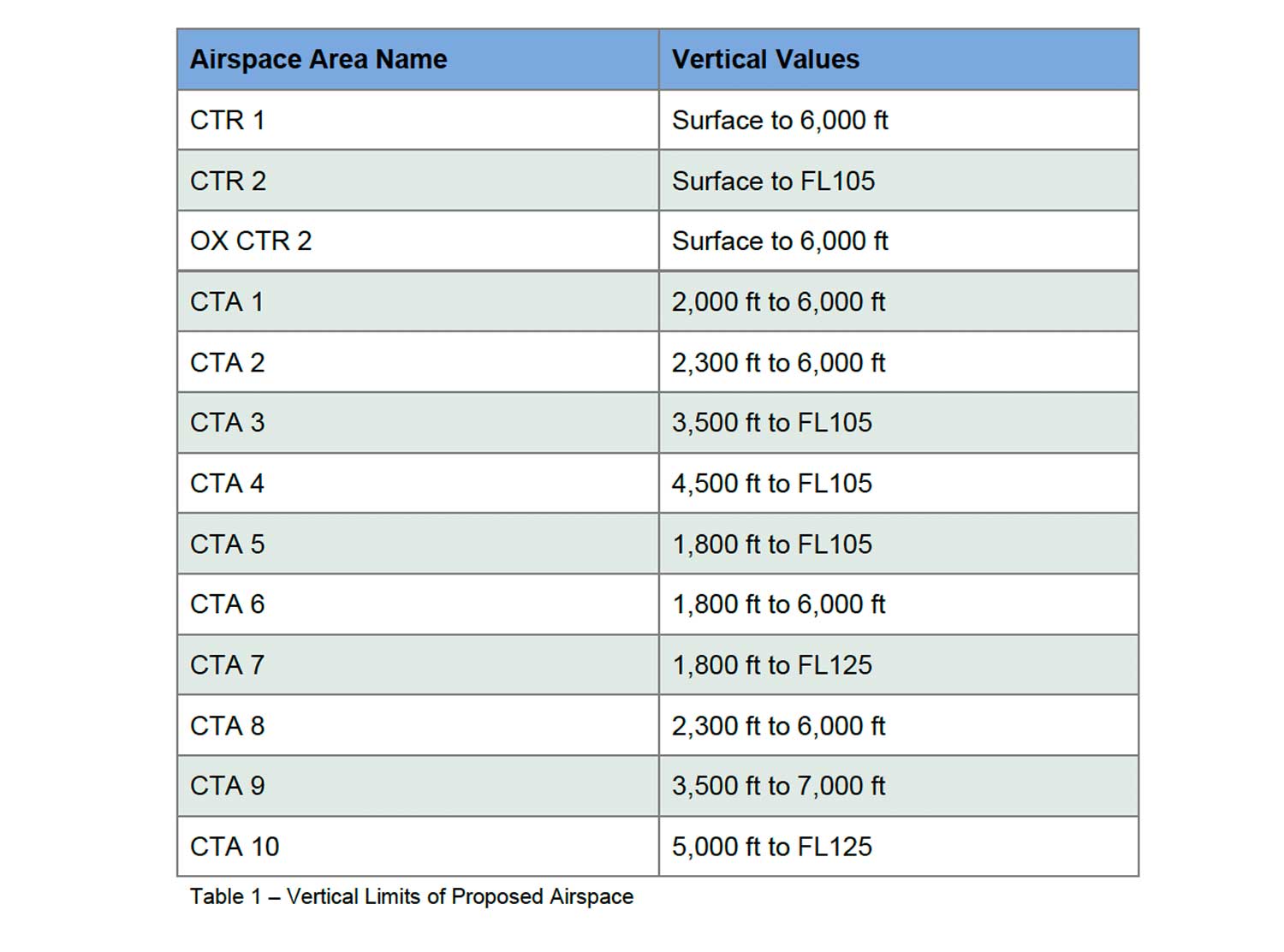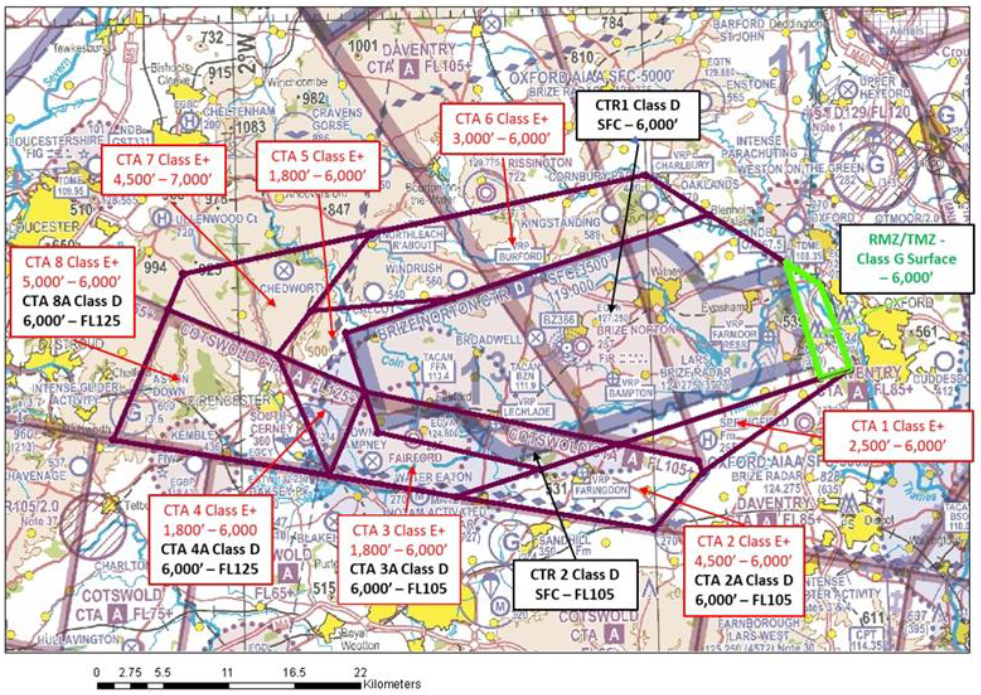This is the latest design for RAF Brize Norton’s new airspace, as submitted to the CAA. As well as being fiendishly complicated it has also invented a new category of airspace, Class E+.
The proposal document that contains the new design said they considered the far simpler airspace design put forward by the General Aviation Alliance, a group of GA organisations working together, but considered it unworkable.

This is the alternative proposed by the General Aviation Alliance. Far simpler…
The proposal introduction says:
“The final design that is being submitted to the CAA for consideration incorporates a mixture of Class D airspace for the CTR and the airspace directly abutting Class A airspace in the en-route structure.
“In addition, some of the CTAs are now Class E CAS, with the addition of an element of conspicuity, provided by either a radio call or by displaying a transponder code. This makes it Class E + Radio Mandatory Zone (RMZ) and/or Transponder Mandatory Zone (TMZ).
“Under this arrangement, aircraft operating under Visual Flight Rules (VFR) may enter the Class E CAS without a clearance from Air Traffic Control (ATC) providing they comply with either the RMZ or TMZ rules.
“VFR aircraft will be required to avoid aircraft operating under Instrument Flight Rules (IFR), and other VFR aircraft.”
The RAF Brize Norton Airspace Change is here.


















6 comments
I wonder why they didn’t go with the alternative proposed by the ‘General Aviation Alliance’? Maybe because it doesn’t actually give the aircraft they’re trying to protect any protection at the levels it is required. Would I prefer a simpler construct? Absolutely. Would I prefer that class D was used where class E + is used? Absolutely. The ability to still transit class D whilst having the additional protection it provides is priceless if one is safety minded. Of course there are those unwilling to use a radio – this begs the question as to whether today’s increasingly congested skies are the right place for those people to fly. If Brize had made all of this Class D they would get slated for that too. This is less Class D as a result of the lengthy consultation period but by it’s nature a little more complex, to appease some of the complaints. Highly accurate reporting here too – ‘Invented a new category of airspace’? It’s class E, with the addition of conspicuity that a TMZ/RMZ gives. So it’s two known, in use airspace types overlaid, not a new invention. The author realises that the experts in airspace design will have had huge input to this, right? It’s not the fictional creation of some high ranking officer who wants to deter GA.
Couldn’t military departures and arrivals make more of their initial climbs and descents within the existing Class D airspace, rather than climbing and descending on track in requisitioned areas of the open FIR?
Replace the airspace designers by experts who can design standard departure and arrival routes that keep aircraft within controlled airspace for longer: these are modern high performance aircraft with the latest navigation equipment flown by professionals!
I’m afraid the airspace here hasn’t been designed by any experts in modern airspace design using current best practices of continuous descent approaches. It may well have been designed by experts in 1980s airspace design.
Part of the reasoning for the re-design is to accommodate the RNAV approach for runway 07. But the approach has been drawn like an old style approach with a low level platform altitude, much lower than the aircraft need to be at to make their approach and the airspace has been designed around this. ridiculous!!
The initial approach fix VN07I at 10DME has an altitude constraint of not below 2300ft as do two further out IAFs BZA1 and BZA2. An aircraft doing a continuous descent approach on a 3 degree profile should be at 3500ft at VN07I and would be more than 4000ft at the other two points. A stable approach is easily achievable using this procedure and these heights as done every day thousands of times around the world. With realistic altitudes at these points CTA 3 4 and 5 at the western end could have the base of the class E + at 3000ft. But instead it has a base of 1800ft to be 500ft below the altitudes written on the approach plate!!!!
It’s a joke. Similarly many of the other approaches are written with long low altitude level segments for a drag it in and dive type approach that was in favour many years ago. For many years the flight safety foundation has been campaigning to remove these type of approach and use continuous descents which are safer and use up less airspace.
Another problem is many of the approaches have been drawn for procedural approaches, which aren’t necessary as the aircraft can be radar vectored or even use their modern Nav kit to self position, no longer a need to go over the beacon and descend outbound in the procedure that was perhaps necessary for the VC10 when the radar was off! They could also keep these approaches inside the current class D if they put a 180kt speed limit on them, rather than 220kt.
They say they want to do these procedural approaches for training, well then do them when you are training in the simulator, this is what it’s perfect for!
It’s not as though any of this is “tactical” the last thing you would want to do over hostile territory is a long drawn out low altitude approach!
It seems GA is becoming a waste of time.i have always been very proud of being able to fly,and try to be as professonal as poss.but it is getting so much harder to have air under our wings without the potential upset of some unseen line in the sky/land. So sad .
Perhaps it’s because I can remember the time when private aircraft didn’t even carry radios. However, not just this, but all the recent airspace grabs eg. Southend, Farnborough etc, leave a nasty smell of empire building and self-importance.
If they’re so concerned about safety then first of all let’s have a look at the present Traffic Control use of their present Airspace. This might mean spending money though, in order to get manning levels up to standard.
When I see this being implemented, I might be a bit more impressed with what they have to say.
That is before commandeering masses more air space purely to, “maybe”, need it all at a later date and leaving even less free airspace for the private flyer. After all, the RAF didn’t need all this when the country was crawling with bombers. If this happened in other countries, the private flying fraternity would have a fit !
Sleeve said “but all the recent airspace grabs eg. Southend, Farnborough etc, leave a nasty smell of empire building and self-importance.” Farnborough was an airspace grab from GA by TAG to sell on at a high profit.